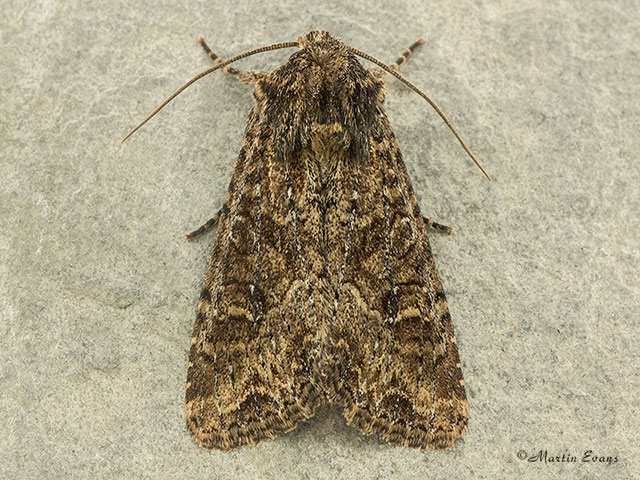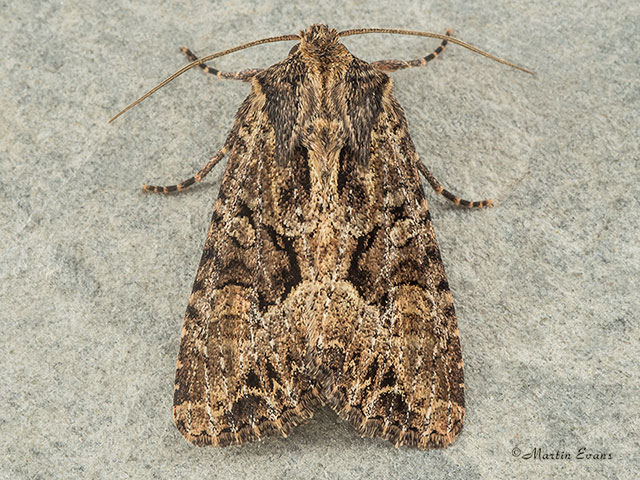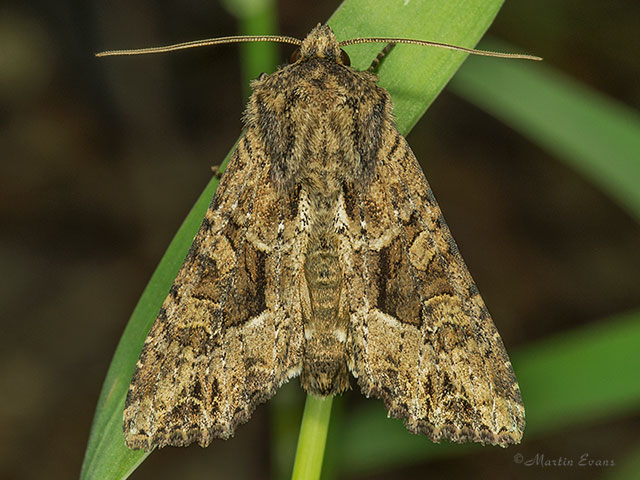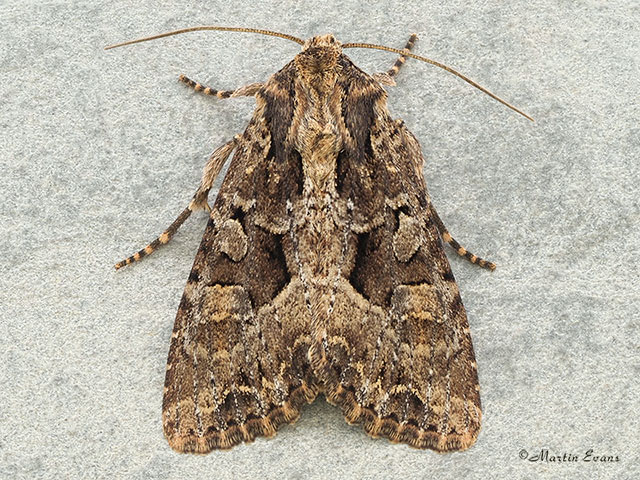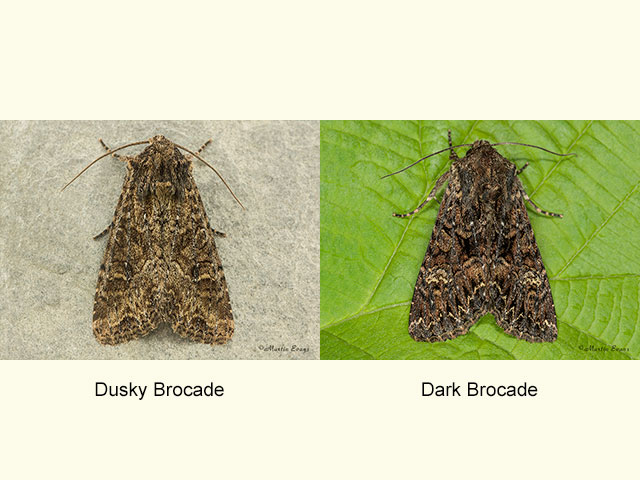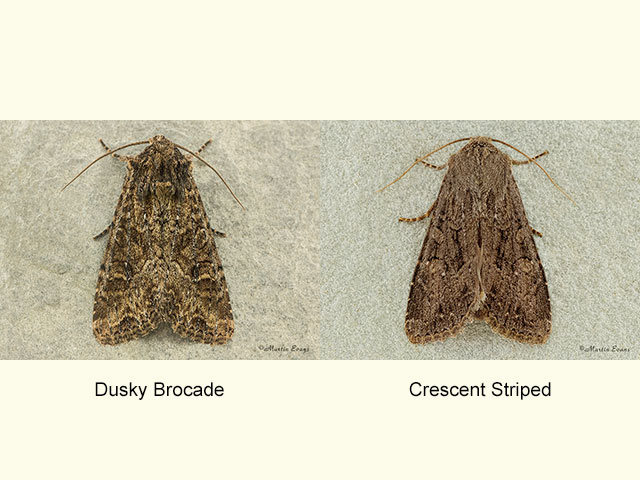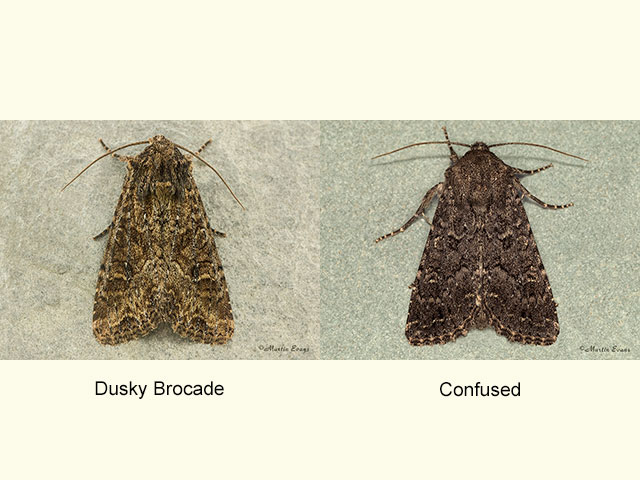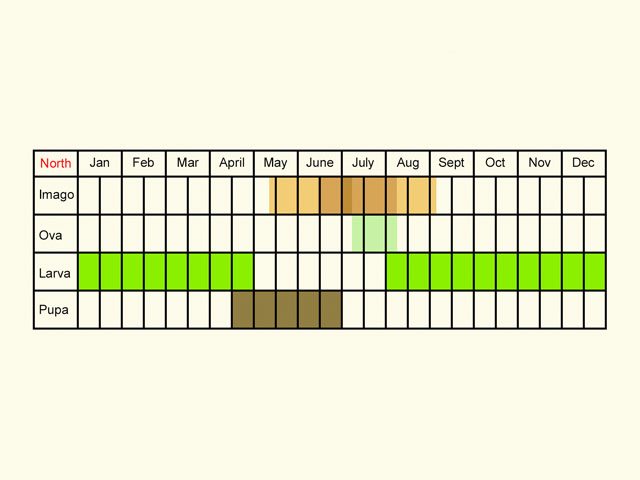Noctuidae
73.154 Dusky Brocade Apamea remissa (Hübner, [1809])
Common
Similar species: Dark Brocade Mniotype adusta is slightly larger (18 to 21mm), generally darker and has a jagged rather than smooth outer edge to the kidney mark. Fresh specimens have long scales around the eyes that look like eye lashes. Crescent Striped Apamea oblonga is similar to darker forms of Dusky Brocade, but is on average larger (18 to 21mm) with a silky forewing that has less defined markings. Confused Apamea furva brittanica has a dark grey-brown rather than reddish-brown forewing with a straighter leading edge and a scale tuft near the base. The kidney mark is about three-quarters of the size of that of Dusky Brocade.
Forewing: 17 to 19mm
Habitats: Dry calcareous grassland, damp meadows, open woodland clearings, along hedgerows, other grassy places and occasionally gardens.
Habits: The moth nectars at flowers and comes to sugar and light.
Foodplant: The larva initially feeds on the flowers and seeds of Common Couch-grass, Reed Canary-grass, Annual Meadow-grass and other grasses. When larger it feeds nocturnally on the leaves of those grasses, hiding by day on the ground. It pupates under the soil.
On the European mainland it has also been recorded feeding on Wood Small-reed and fescues.
